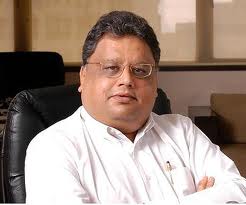
If Rakesh Jhunjhunwala were to build his portfolio today – in 2012 – what stocks would he buy?
Let’s first understand what Rakesh Jhunjhunwala looks for in a stock before we prefer a short-list. Using some of the stocks that Rakesh Jhunjhunwala already has in his stock portfolio – Titan Industries, CRISIL, Lupin – can give us valuable pointers on what the master investor is looking for.
Rakesh Jhunjhunwala has a simple formula when he goes looking for a stock:
(i) Top Quality management with high integrity:

This is an absolutely non-negotiable condition. If the management is not honest, will they want to share the goodies with you? No, they will look for the first opportunity to siphon off the profits and pull the wool over your eyes.
Rakesh Jhunjhunwala‘s big investments are in stocks run by managements of impeccable integrity such as Titan & Rallis (Tatas), CRISIL & Lupin. No fly-by-night operators for Rakesh Jhunjhunwala.
(ii) The scale of opportunity must be big:
Rakesh Jhunjhunwala is never tired of emphasizing this aspect. Multi-bagger stocks are created because they are able to scale the opportunity rapidly. Titan Industries is a great example. In 2003-04, Titan‘s market cap was 500 crores. In 2011-12, it is close to 19,500 crores.
The fact that India is a booming marketplace of 120 crores consumers means that most products and services have a head start at trying to scale up their activities.
Rakesh Jhunjhunwala‘s stock picks in Delta Corp & Sterling Holidays are perfect examples of this strategy. If India’s burgeoning middle-class population takes a fancy to the gaming and hospitality sector, Rakesh Jhunjhunwala will have his multi-bagger stocks.
(iii) Barriers to competition:
A stock with a monopoly or duopoly command over the market pace would be nice. CRISIL is a perfect example. A powerful brand that draws customers is necessary. Titan & Nestle are good examples where customers seek the product.
Delta Corp & Sterling Holidays are again good examples. Sterling Holidays has resorts in fancy exotic locations that will be hard for a competitor to replicate given the soaring land costs. Delta Corp similarly has the first-mover advantage.
(iv) Low debt; free cash flows:
We learnt from the great crisis of 2011 that companies with high debt on their books simply get slaughtered. While debt per se is not bad (if the company is able to borrow at a lower rate and deploy it in its business at a higher rate, the operating leverage works in its favour), excessive debt with high interest and repayment obligations can crunch the stock in times of downturn. So, as a long-term investment philosophy, it is best to steer clear of high-debt companies.
(v) High ROE – Efficient users of capital:
Some managements are able to squeeze that little extra of every buck. A ROE of at least 25% is necessary to make into the hallowed list of Rakesh Jhunjhunwala’s model portfolio. Anything less than that and the management will be shown the door.
(vi) No High Capex Requirements – No Serial Diluters of Equity:
We know from (bitter) experience the demerits of investing in stocks like Suzlon & GMR which have an insatiable appetite for more and more capital. To feed their perennial hunger, these companies dilute their equity by making FPOs, GDRs & FCCBs resulting in total destruction of shareholders’ wealth.
Rakesh Jhunjhunwala says companies should be lean and mean. Requiring minimal capital but generating huge returns there from.
(vii) Reasonable growth expectations:
Rakesh Jhunjhunwala was very blunt: “If I get a tax-free return of 18% on my portfolio, I would be very happy”.
So, stop craving for that overnight multi-bagger. You’ll only end up losing your precious capital that way. Instead, look for well established blue chip stocks that are growing at a reasonable rate of return (15 – 25%). With time and the magic of compounding, you will have your muti-bagger (see Blue Chips Stock Portfolio: Compounding Multi-bagger). Even Raamdeo Agarwal has testified to the effectiveness of this investment strategy
(viii) Valuations:
Most investors are obsessed about valuations, refusing to buy any stock that is “expensive”. However, one must remember that “expensive” is a relative term. If a stock is compounding at 25% on an annual basis, paying a price of 30 times earnings may be very reasonable. A stock like Nestle, for instance, has always been “expensive”. However, if an investor had gone ahead and bought the stock, he would have had an incredible multi-bagger on his hands. On the other hand, in trying to buy a “cheap” stock, one may get saddled with unsavory companies. After all, there is a reason why such stocks are “cheap”.
Of course, one should be careful not to buy in euphoric or bubble times when the pricing may be extravagant and not at all reasonable.
(ix) Concentrated Portfolio:
Rakesh Jhunjhunwala is, like Warren Buffett, a believer in the concept of a concentrated portfolio. If you believe in the prospects of a stock you should be prepared to put a substantial chunk of money in it – or nothing at all. There is no point in buying a bit of this and a bit of that because that dilutes your returns.
Rakesh Jhunjhunwala‘s portfolio shows that he has “34” stocks but this is deceptive because just “3” stocks make up 67% of the total portfolio: Clinching evidence that the master is a believer in the concept of the concentrated portfolio.
Of course, we are no match for Rakesh Jhunjhunwala and we do not have his conviction levels. So, we’ll stick to 20 stocks to begin with, which means that upto 5% of the wealth will be invested in each stock.
(x) Diversification:
Rakesh Jhunjhunwala might scoff at us for being too wary but it is better to be safe than sorry. A proper portfolio must be diversified across sectors. A bit of Finance, a bit of consumption, some autos, a pinch of pharma etc will make for a balanced portfolio.
So lets start with the shortlist of Rakesh Jhunjhunwala’s model portfolio:
(1) Bajaj Auto:
Bajaj Auto caught our eye when Shankar Sharma called it a stock with “terrific value” when it was quoting at Rs. 1350 (see Bajaj Auto: Shankar Sharma’s “Extremely Cheap” Stock Pick). Well, we are very happy we bought into that stock because since then – about 10 months – Bajaj Auto has given us a return of 30%+ even though the rest of the market is in the doldrums.
Bajaj Auto fits in with Rakesh Jhunjhunwala’s text-book requirements of a quality stock:
(i) Bajaj Auto has top quality management (Rahul Bajaj & Rajiv Bajaj);
(ii) Bajaj Auto has a dominant market position (second only to Hero Motor);
(iii) The market for two wheelers is growing at a scorching pace in India and elsewhere;
(iv) Bajaj Auto has no debt. Instead, it has cash of Rs. 3,500+ crores in the books. So, any capex requirements is easily taken care of without any need for equity dilution;
(v) Bajaj Auto’s ROE is a phenomenal 77% and its dividend yield is a not-to-be-scoffed-at 2.50%;
(vi) Bajaj Auto has richly rewarded its shareholders. If you had bought the stock 3 years ago, you would have made an incredible 990% return on your investment!
(2) Titan Industries:
Titan Industries is without a doubt Rakesh Jhunjhunwala’s crown jewel stock. The master has been holding the stock of Titan Industries since he identified it in 2003 at the then price of Rs. 60 (pre bonus & split) and it is now worth a mammoth Rs. 1300 crores having given a mind-blowing return of return of 3500%.
Titan Industries has been a bit under the weather for the past few months thanks to the spiraling cost of Gold and diamonds (Titan’s raw materials). The soaring costs have meant that Titan’s customers have sat on the fence & postponed their purchasers. However, this may well be the opportunity for long-term investors to tank up on Titan Industries.
Titan Industries growth story is far from over. The management is highly ambitious, always looking for new and innovative products to bring into the market place. And with a powerful brand and unique product line, it has the necessary moat as well.
Yes, at about 30 times FY 2011 earnings, Titan Industries is expensive. But, as Raamdeo Agrawal points out, quality stocks are rarely available cheap and the premium one pays is well worth it. These stocks compound at 25% on an annual basis and also pay out hefty dividend.
(3) Coal India:
Rakesh Jhunjhunwala does not have a single commodity stock in his portfolio but as he clarified recently, this is just pure coincidence and not by design. Coal India (COAIND) is the world’s largest coal reserve holder and producer and also controls 80% of the Indian coal market. It is going to be the primary beneficiary of the structural deficit of coal in India. Moreover, it is one of the least cost producers of coal in the world.
Coal India, a Maharatna company, is one of the largest public sector companies in India in terms of turnover. Its product portfolio consists largely of thermal coal (90%) with the balance being coking coal. Coal India enjoys a near-monopoly position in the lucrative coal market and is more of a utility player due to assured volume off-take and minimal chance of a product price cut, as prices already remain at 50% discount to internal benchmark prices.
Coal India currently operates 471 mines in India and is also scouting for international mines to increase global presence and assure its resources. It sells 10% of its production based on the e-auction route and 3.5% beneficiated coal (2x realizations of raw coal). Beneficiated coal volumes are expected to rise significantly to 150 mtpa by FY17 (25% of total volumes).
Coal India produced 43.13 crore tons in FY10 and their reserve position (extractable reserves) stands at 2,175 crores tons as of April, 2010. This translates into 51 years of production capacity going by current production rates. Going by the reserve position, we believe that CIL is a great opportunity to own a critical resource. On the demand side, India being a power deficit country, there is significant power capacity being added with fuel resource being coal. Currently most private companies building power capacities have been signing up long term Fuel Supply Agreements (FSAs) with foreign players due to shortage of coal domestically. We believe there is enough demand for coal and further scale up of production by CIL would find more than enough takers.
The big trigger for Coal India comes due to the pricing differential between raw coal that CIL sells and washed coal that is imported from mines abroad. The average realization for CIL is 50% lower than import parity price of coal. The margin for CIL per ton is currently close to Rs 400/ton. The management of CIL has indicated that it is putting in place a system for producing more of washed coal to match the quality of imported coal. This would require capex of `350/ton but would improve realization and margins manifold. By FY17, COAIND would have a 25% share of washed coal.
At the CMP of Rs 300, the Coal India stock trades at a PE of 10.61x FY12E earnings and 9.82x FY13 earnings. Coal India Ltd is an excellent investment and would prove to be a multi-bagger in the long term.
(4) Power Grid Corporation:
Rakesh Jhunjhunwala is quite fond of utility stocks because, while these stocks may not become overnight multibaggers, they provide the portfolio with much needed stability thanks to their assured income stream.
Power Grid would be Rakesh Jhunjhunwala‘s top electric utility pick because it is expected to deliver 15% EPS growth in FY11-14E with an average RoE of 14%. Power Grid is the safest play in the Indian electric utilities sector, which has been riddled with coal shortages, falling merchant prices and deteriorating SEB finances. While these risks could impede Power Grid’s growth due to delayed capacity additions, these risks are factored in the current market price.
Power Grid has the statutory role of Central Transmission Utility and operates and is responsible for the planning and development of the country’s nationwide power transmission network. It is the world’s third largest transmission utility and is ranked 15th on the list of fastest growing Asian energy companies. Power Grid is known for its high operational efficiency: It also has a diversified business portfolio: and has leveraged its strength by diversifying into the consultancy business and telecommunications business. Power Grid has a strong financial position which will facilitate its expansion plans.
(5) HDFC Bank:
In the banking space, there is a bewildering array of choice. On the one hand there are giant PSUs like State Bank of India, PNB and giant Private sector counterparts like ICICI Bank. In between, there is another vast array of top-quality choice in Yes Bank, IndusInd, South Indian Bank, BOB etc. All of these are available at mouth watering valuations.
But, in times of crises like the present one, Rakesh Jhunjhunwala would have trusted HDFC Bank, the old war horse, with his precious money because it meets all his requirements. HDFC Bank has an impeccable reputation and track record of consistent growth rate at 30% CAGR over the past several years. With top management like Deepak Parekh, Keki Mistry & Aditya Puri, Rakesh Jhunjhunwala does not have to look far to find his banking stock.
Value-investor purists may scoff at HDFC Bank‘s valuations (4 times FY 2010 Book vs. 1.8 times for SBI) but the premium is well worth it. On a YOY basis, SBI has lost 30%, while HDFC Bank has remained flat. One has to pay a price for HDFC Bank‘s pedigree and this pays itself off in the near future.
(6) Page Industries:
Its no secret that Rakesh Jhunjhunwala is a strong believer in the great India consumption story. So, he would almost certainly have homed in on Page Industries, the franchisee of Jockey international in India.
Page Industries fits in with Rakesh Jhunjhunwala‘s insistence on the company having a “deep moat” because it has strong brand recall, well-channelised distribution channel and integrated manufacturing facility. Jockey, Page Industries’ flagship brand, is one of the strongest brands in India’s innerwear industry and is set to benefit from the Indian consumer’s shifting preference for branded innerwear driven by rising income levels, urbanisation and penetration of organised retail.
Page Industries witnessed a 5x jump in profitability in the past five years and its profitability is expected to grow 4x during FY11-FY16. The innerwear industry is expected to grow at a CAGR of 13% over 2009-20, but more importantly it would witness a shift to premium segment, which is the stronghold of Page Industries.
Page Industries has invested in building a strong distribution network (20,000 outlets), an integrated manufacturing facility (13,000 employees) and gaining a super brand status, which provides it a significant lead time advantage over potential competitors. Page Industries has the franchisee rights of Jockey International for innerwears till 2030.
Of course, at 23 times FY 2010 earnings, Page Industries is not “cheap” nor has it ever been so given its high margins, high growth, return on capital and strong brand recall. However, the price is well worth because Page Industries is expected to post a revenue CAGR of 32% and a PAT CAGR of 37% during FY11-FY15 while maintaining the margins.
(7) VST Industries:
Buying VST Industries would be a no-brainer for Rakesh Jhunjhunwala given that his Guru & Mentor, Radhakishan Damani, holds a mammoth 25.95% of VST Industries‘ equity worth a staggering Rs. 520 crores. VST Industries first caught our attention thanks to its attractive dividend yield. Since then, the stock price has skyrocketed though the stock continues to remains attractive. VST Industries, a cigarette manufacturer, has the ultimate “moat” in place because no other licenses are being issued by the Government. Apart from the “moat” and Radhakishan Damani, VST Industries is attractive because it is sitting on a very healthy financial profile. It is a cash-rich company, with debt-free status and has a track record of paying rich dividends.
Rakesh Jhunjhunwala’s Portfolio For 2012
[download id=””]
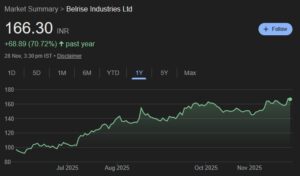

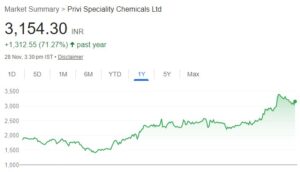
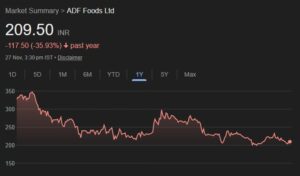
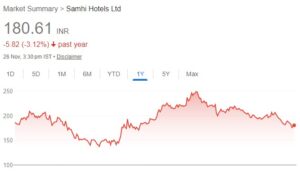
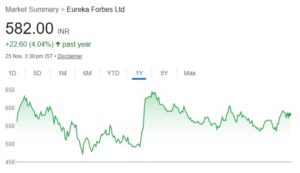
The topic is familiar but the content is very fresh and easier to understand. It has helped the readers to reduce the fear of investing and thereby losing money in the share market.
If rakesh really would/ should buy a stock than it can be spicejet yes spicejet (“an airline”) why …
1) it is proxy to indian consumptio n
2) it has a valuation on its side 800 cr mcap for near 8000 cr sales in fy14-15
3) it is bought by his guru Mr. damani at 56 rs per share and is available at 1/3rd of val.
4) No debt on book
5) and as far as competition is concern they r in very bad shape so pricing issues will subside as capacity growth will not be that hight and demand may grow at 20% if economy improves
By Kunal Shah
Is there mistake between Radhakishan Damani & Ramesh Damani. R. K. Damani is guru of Rakeshji not Ramesh Damani. But I agree Spice Jet is very good stock. I am holding since 18 months. Because of Maran & oil crises, stock is down but I am hopeful for long-term.